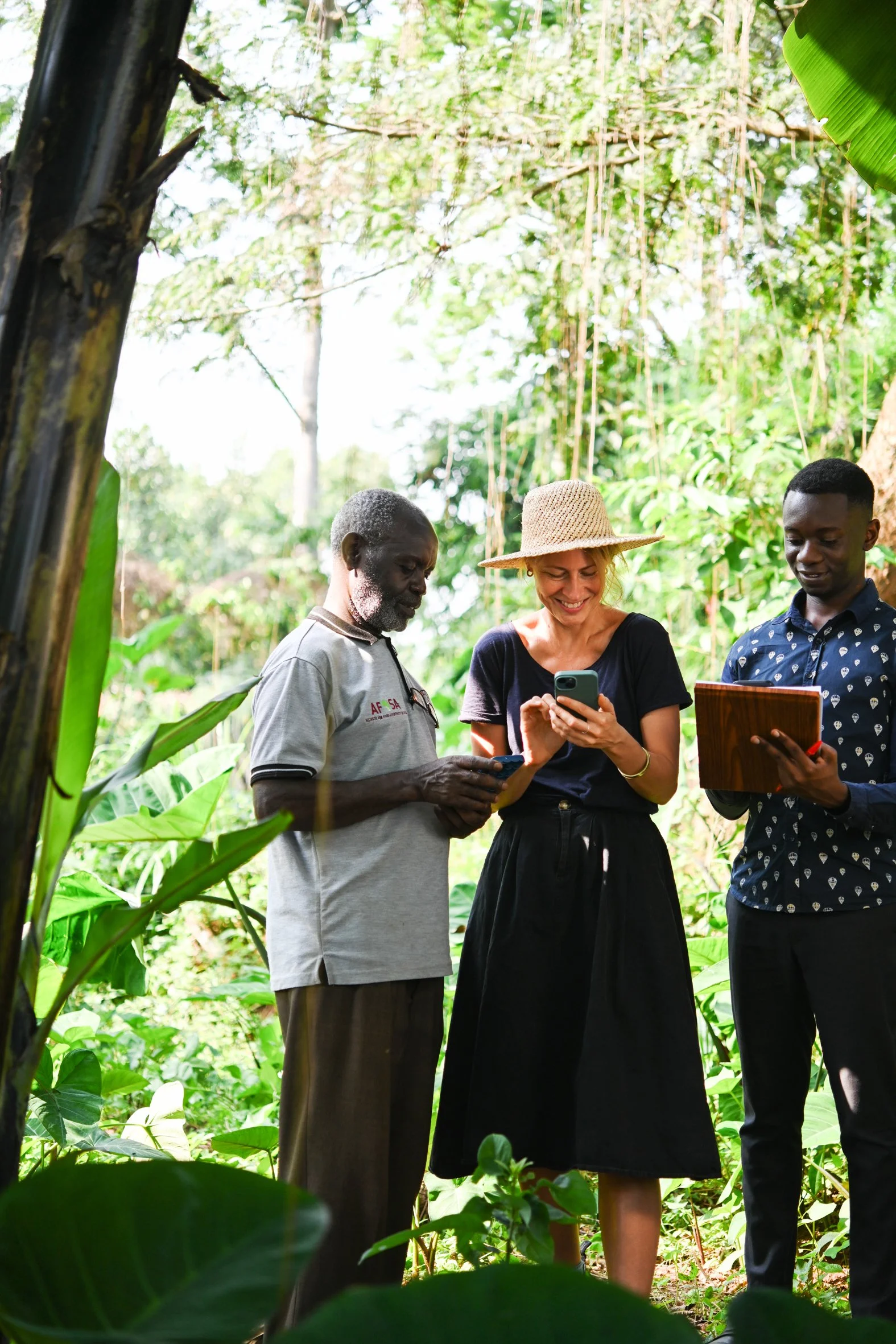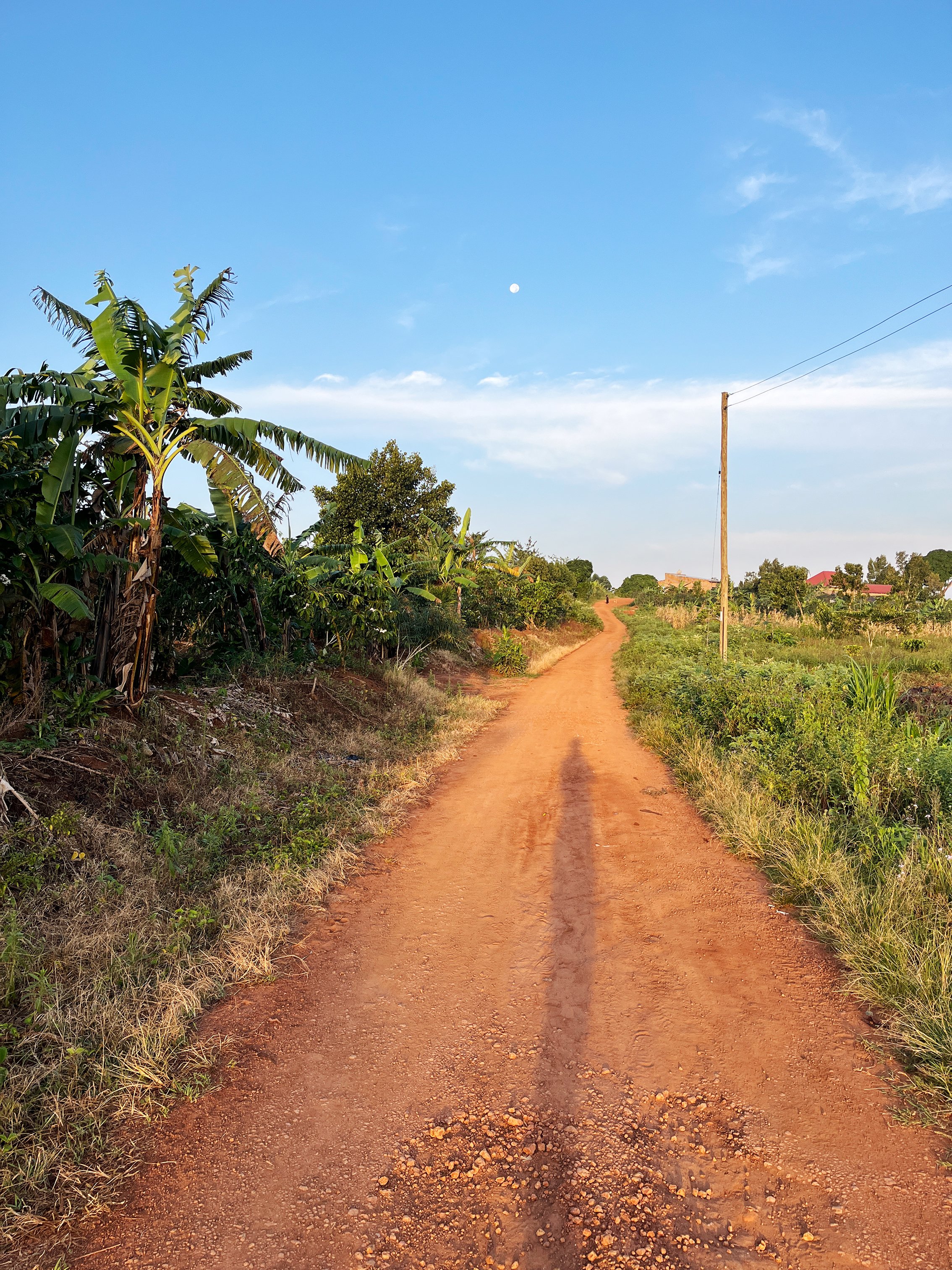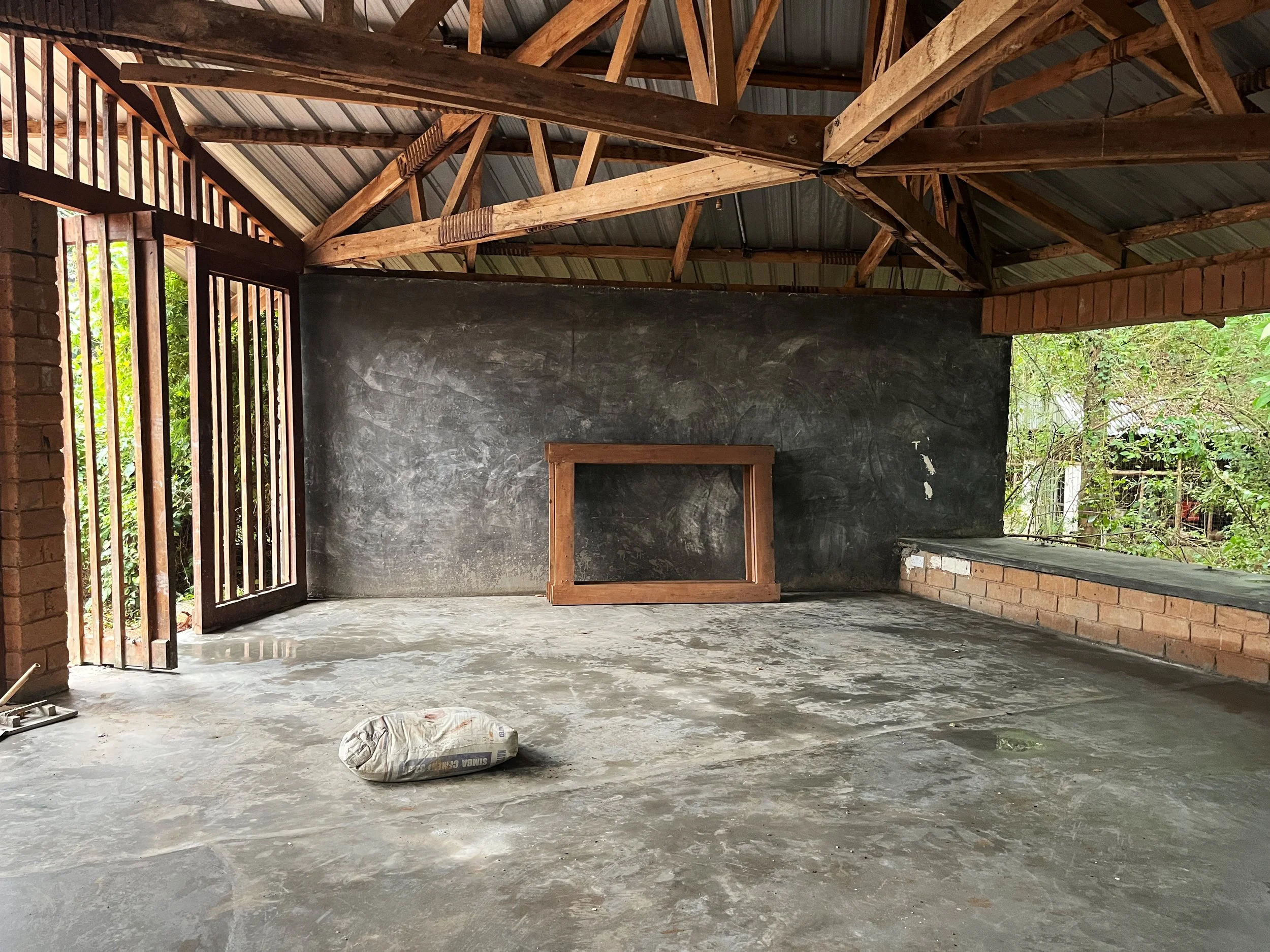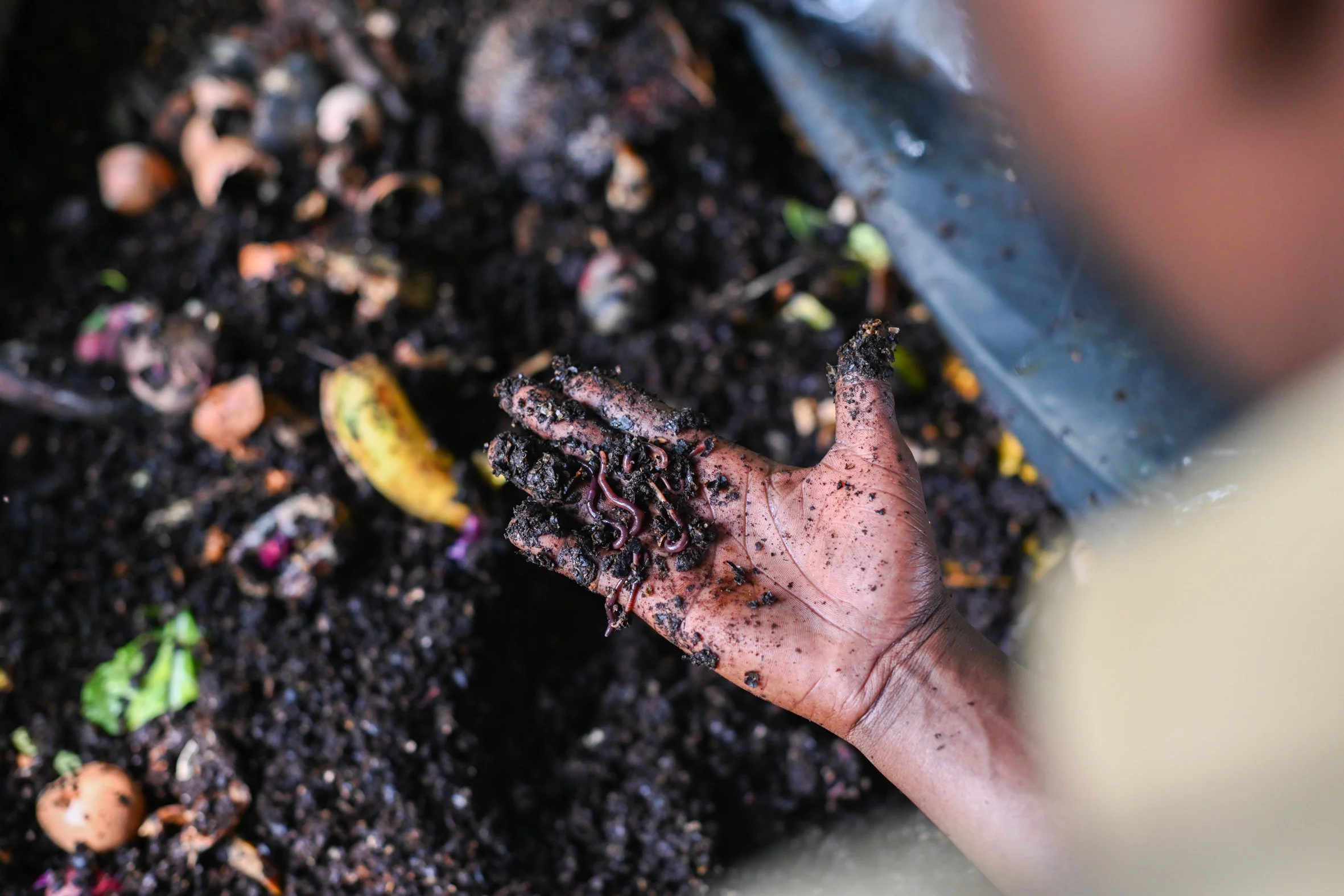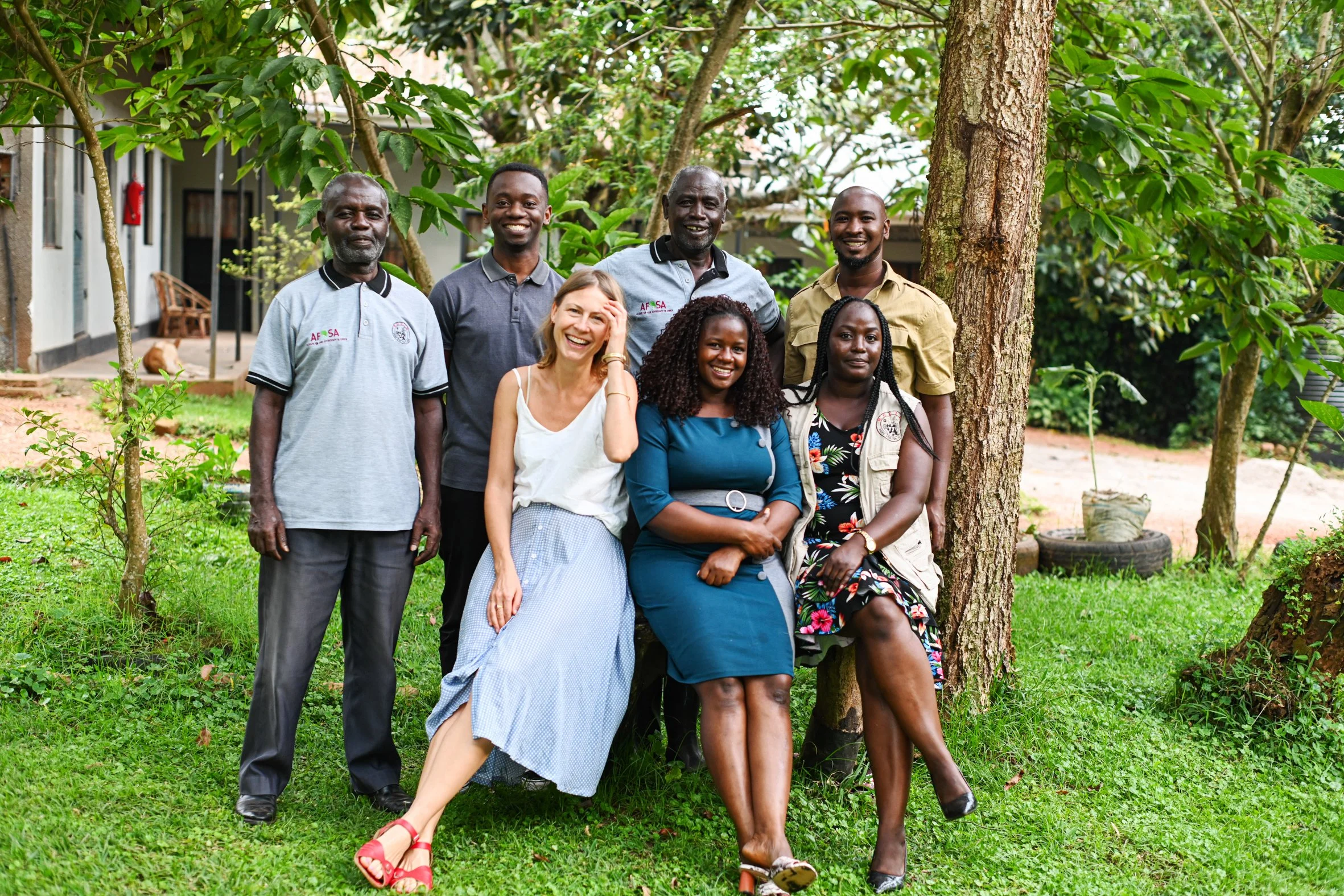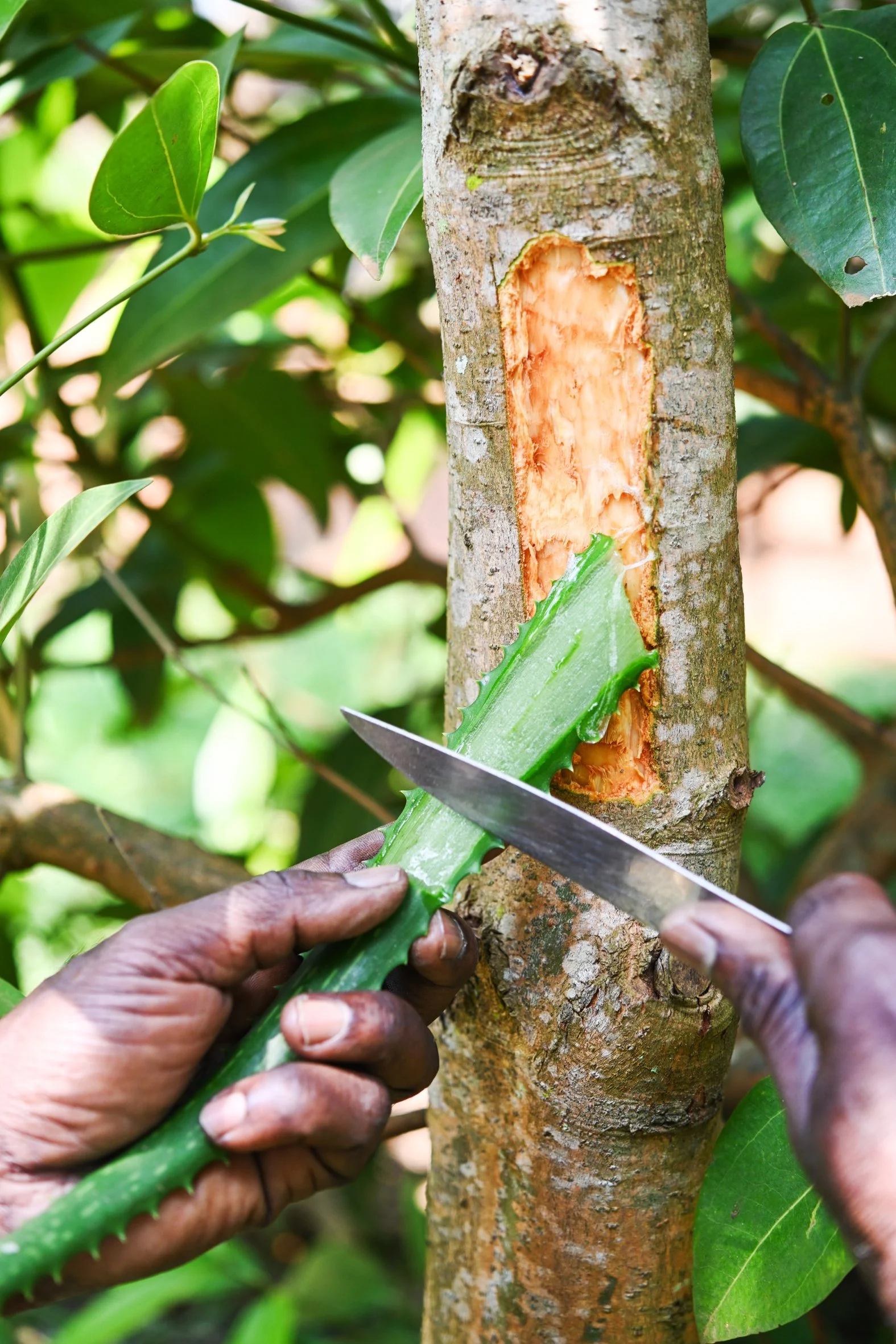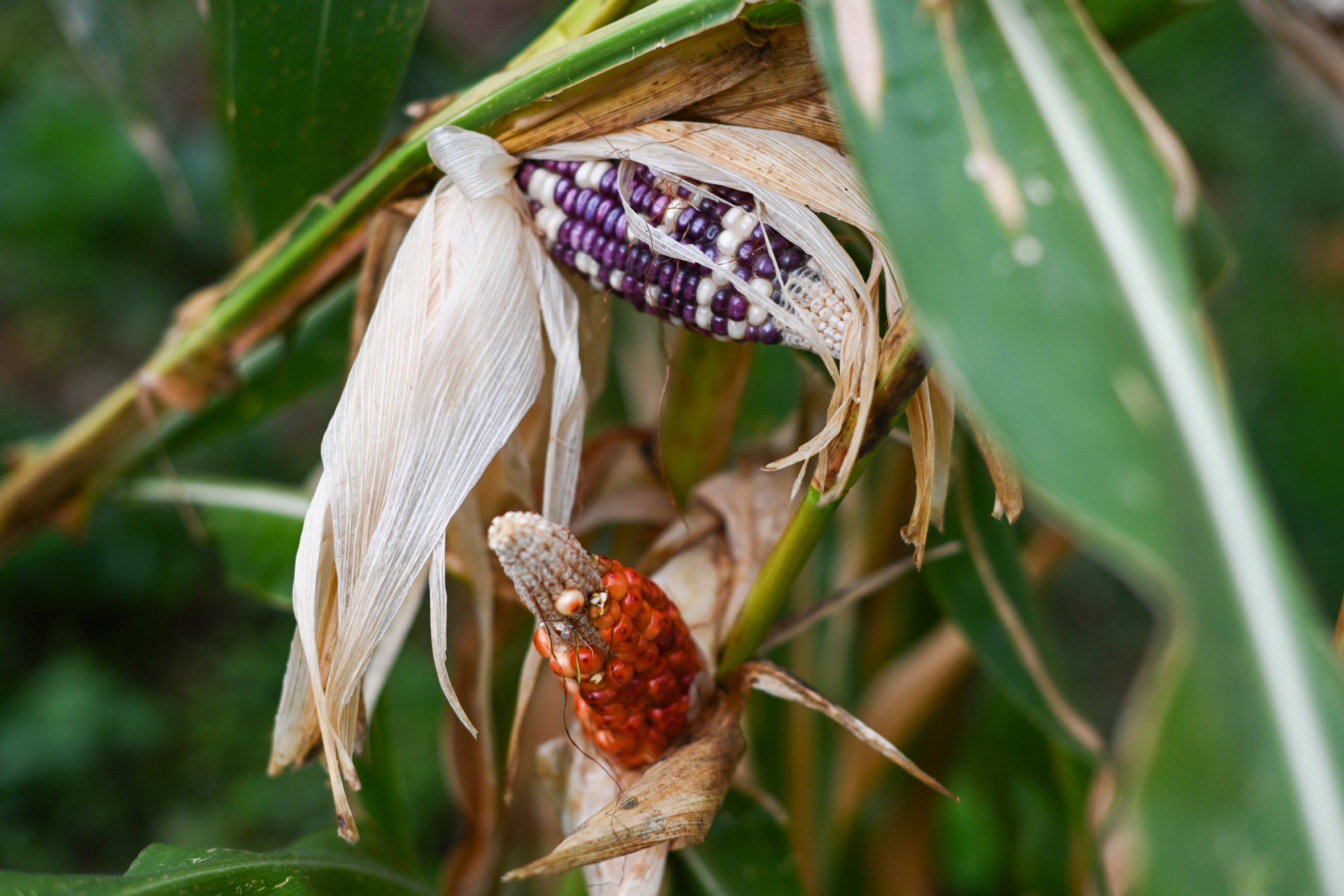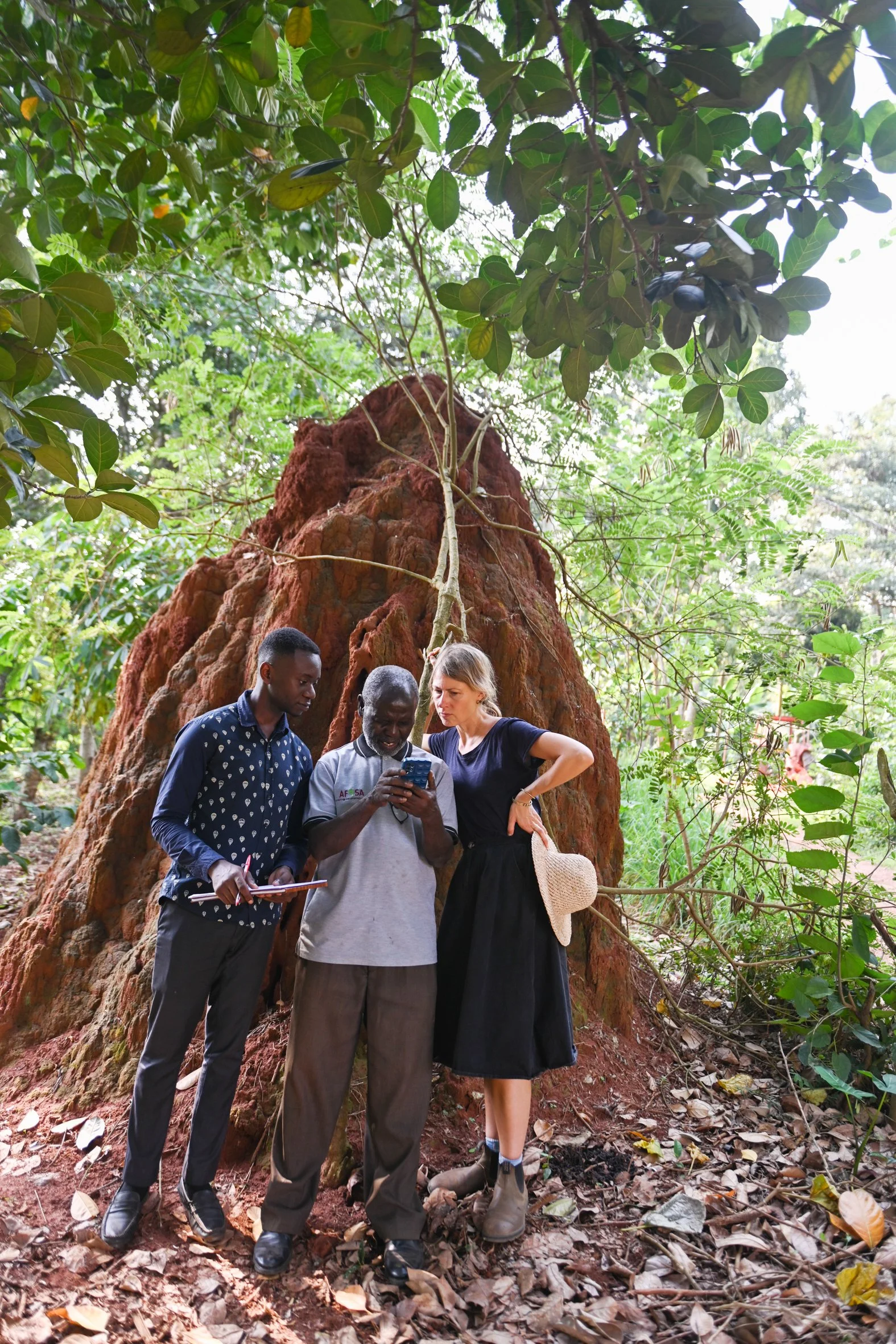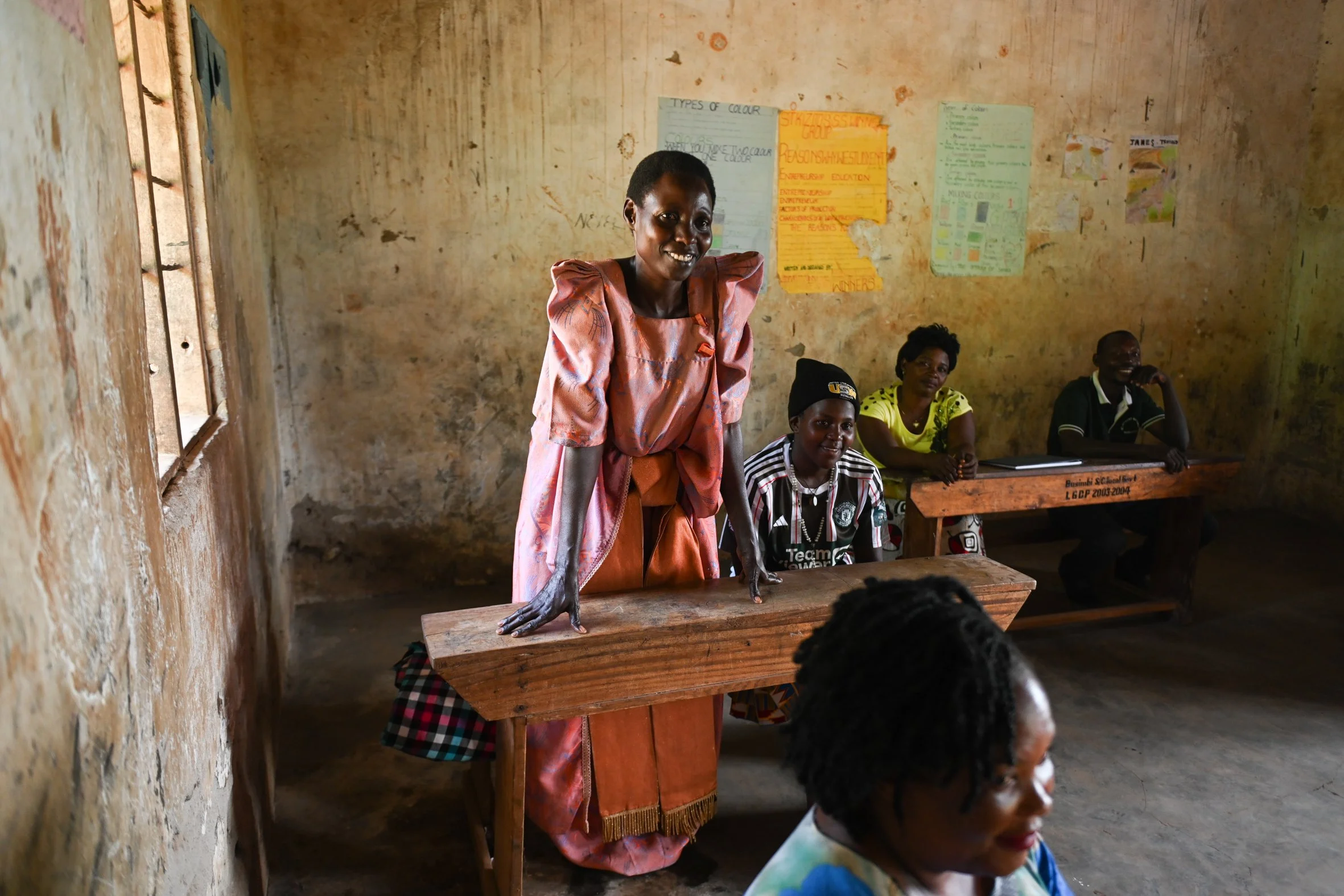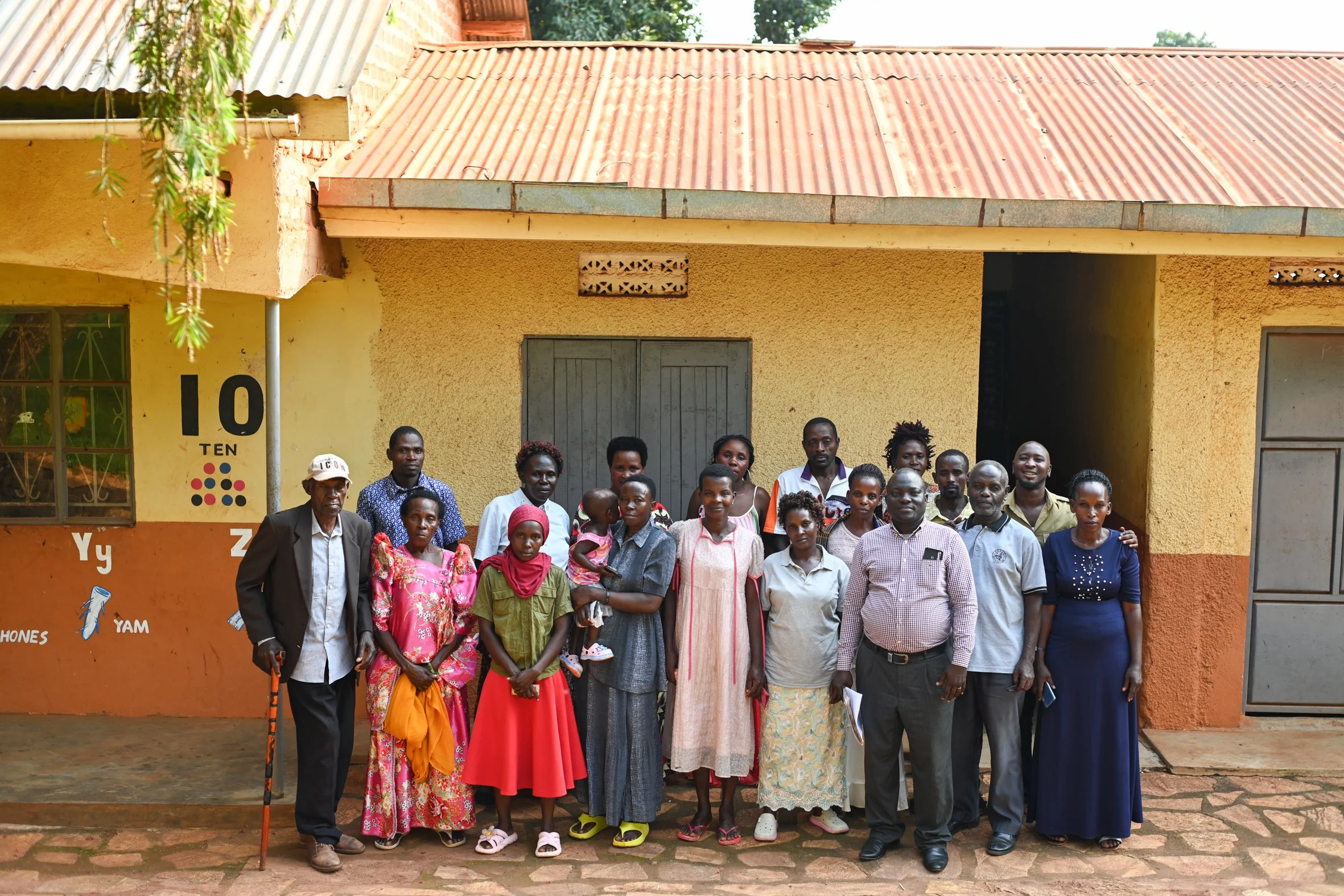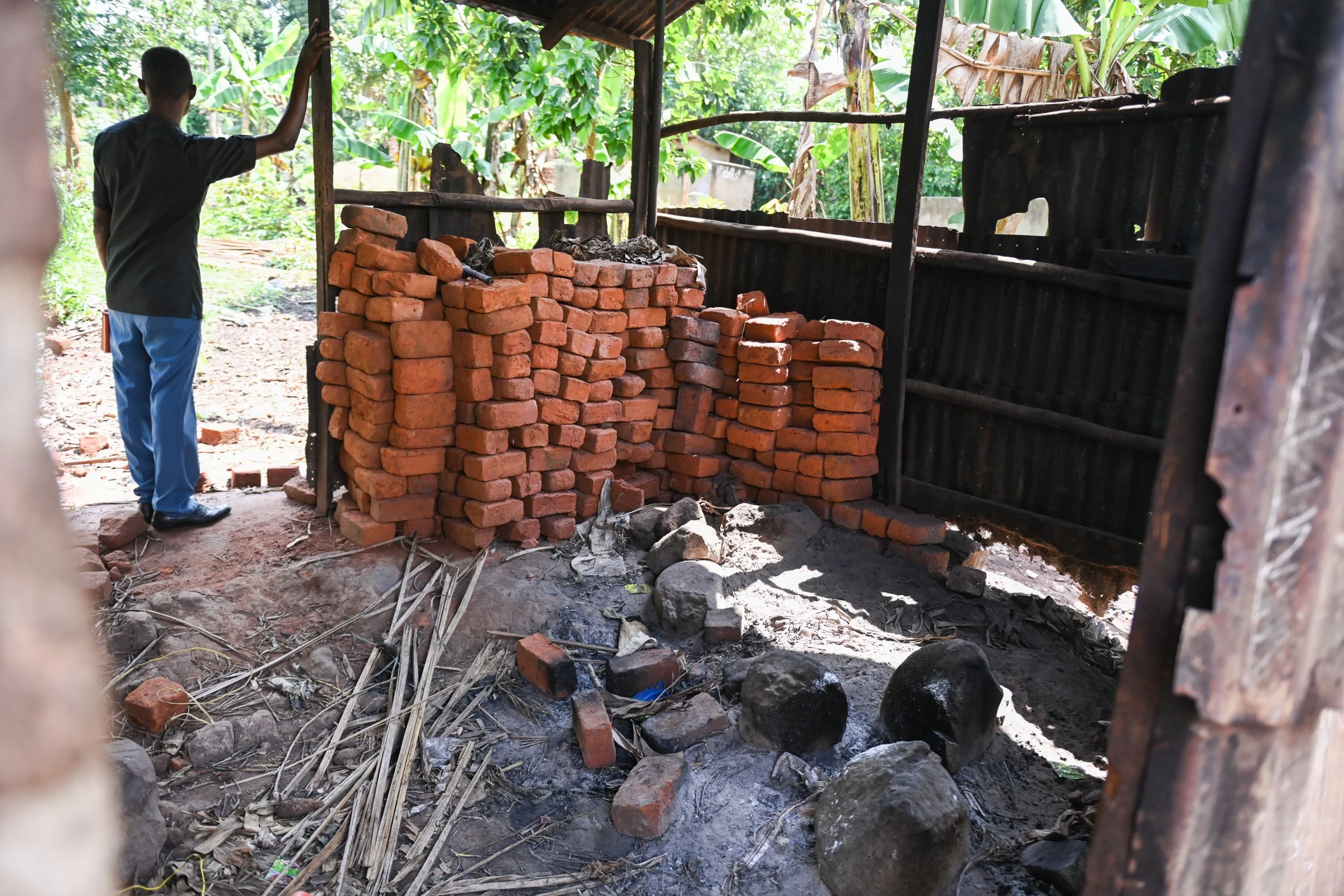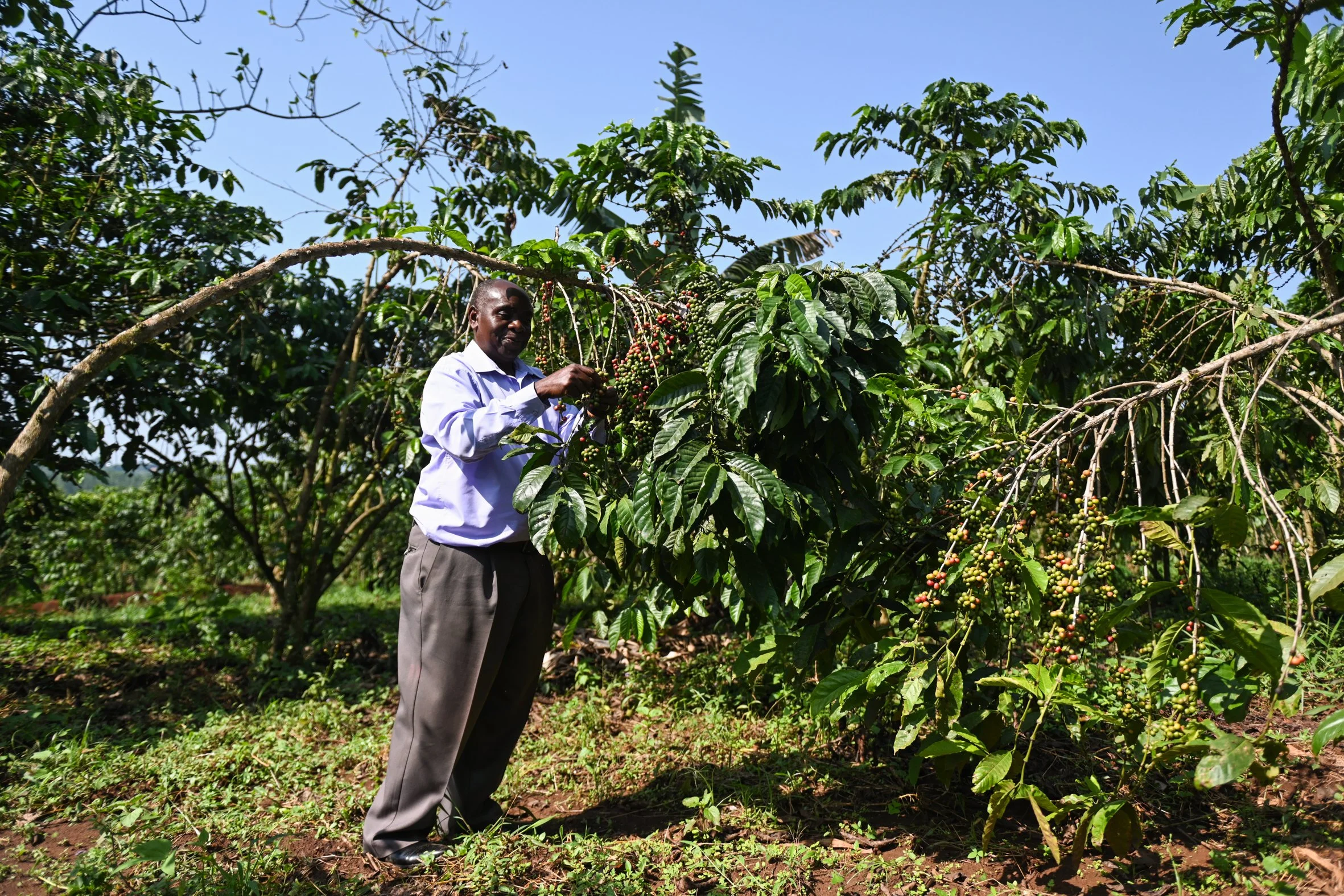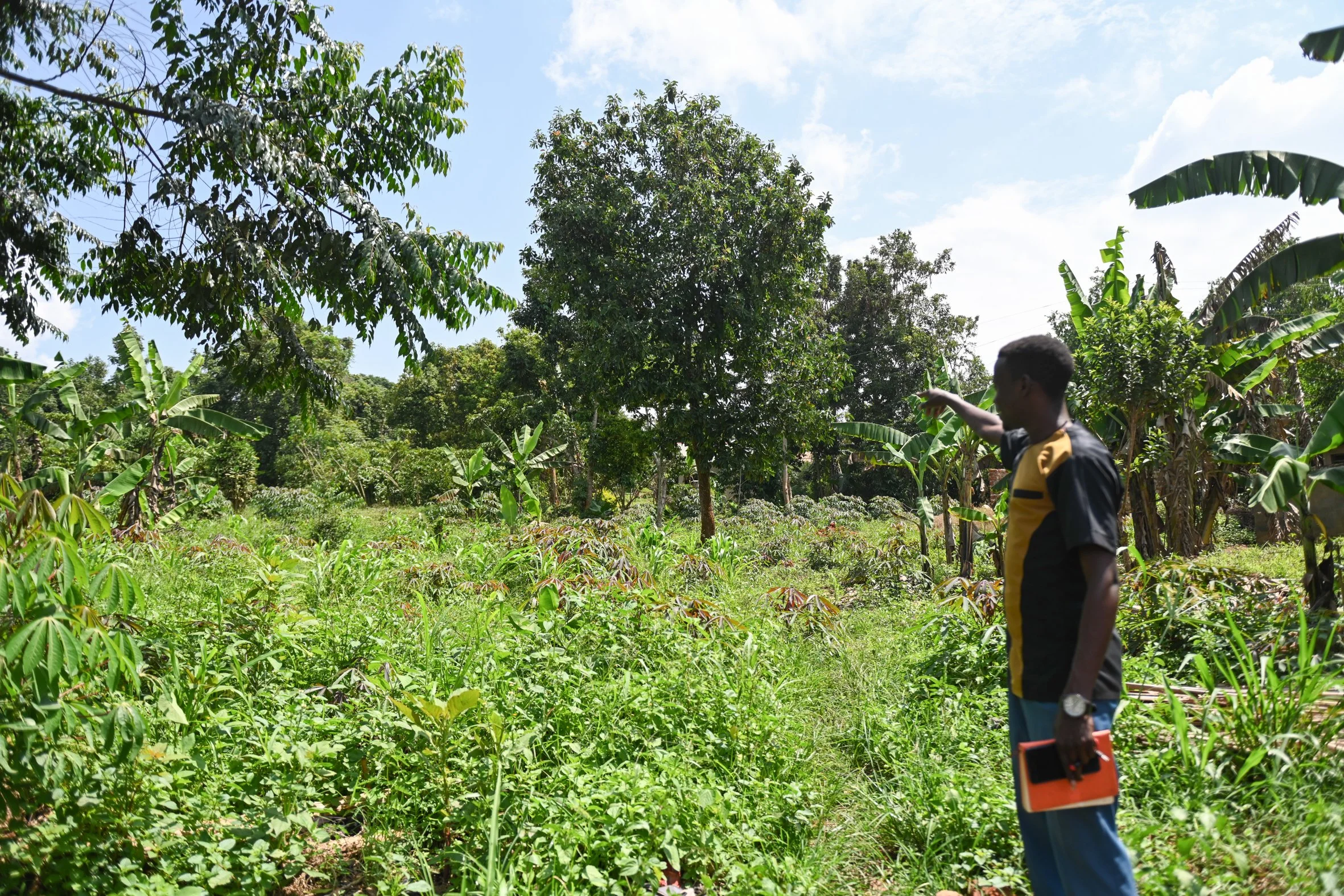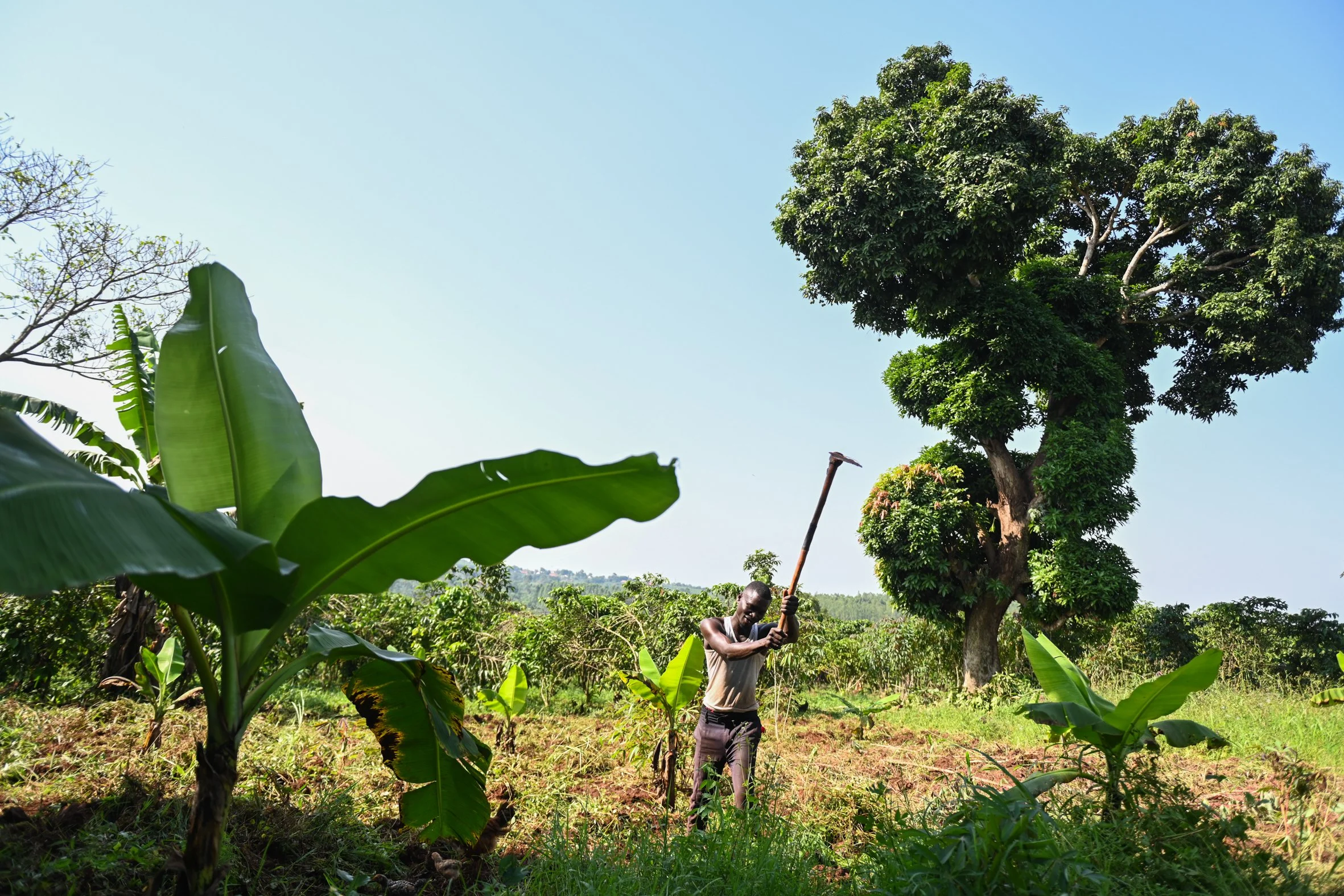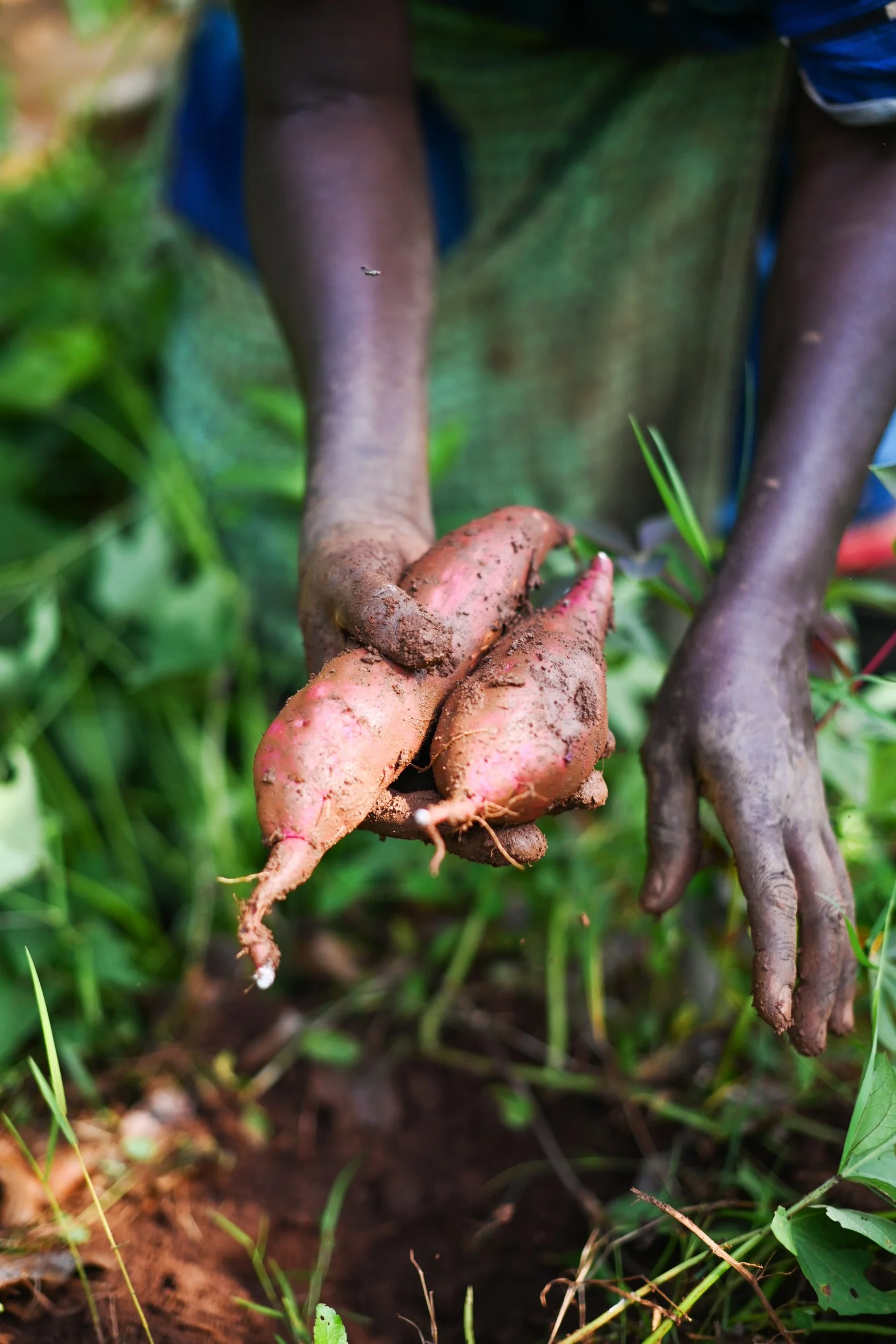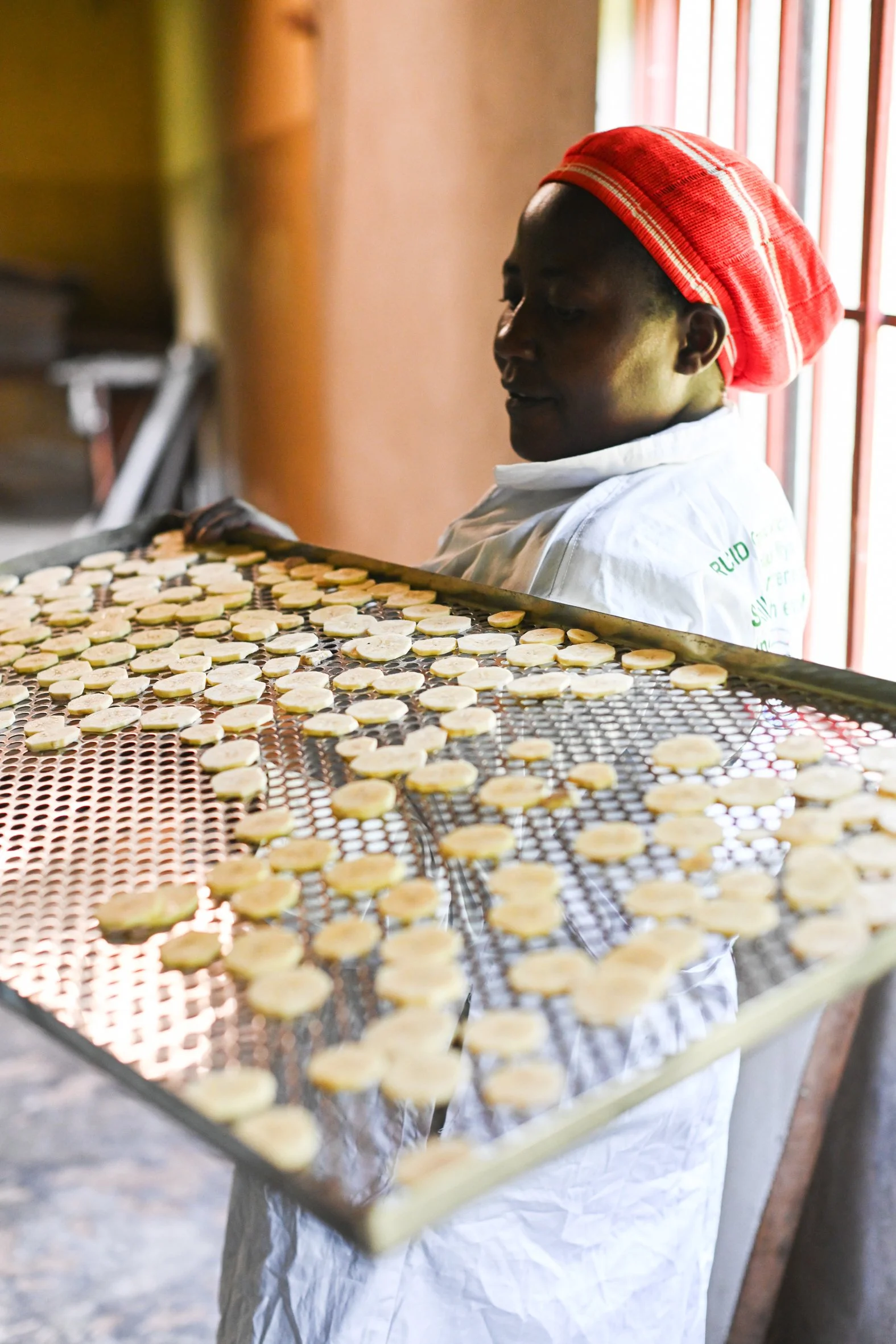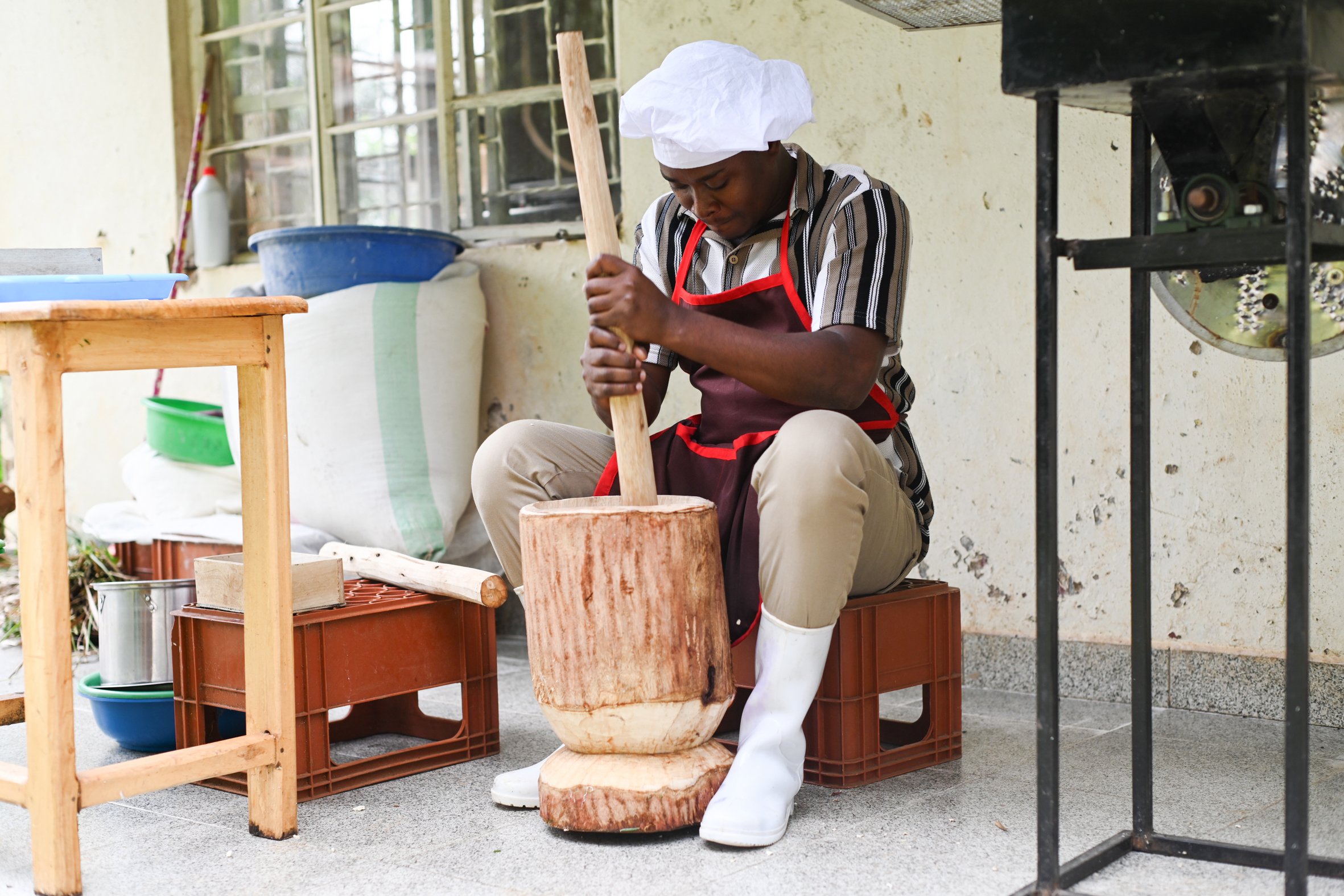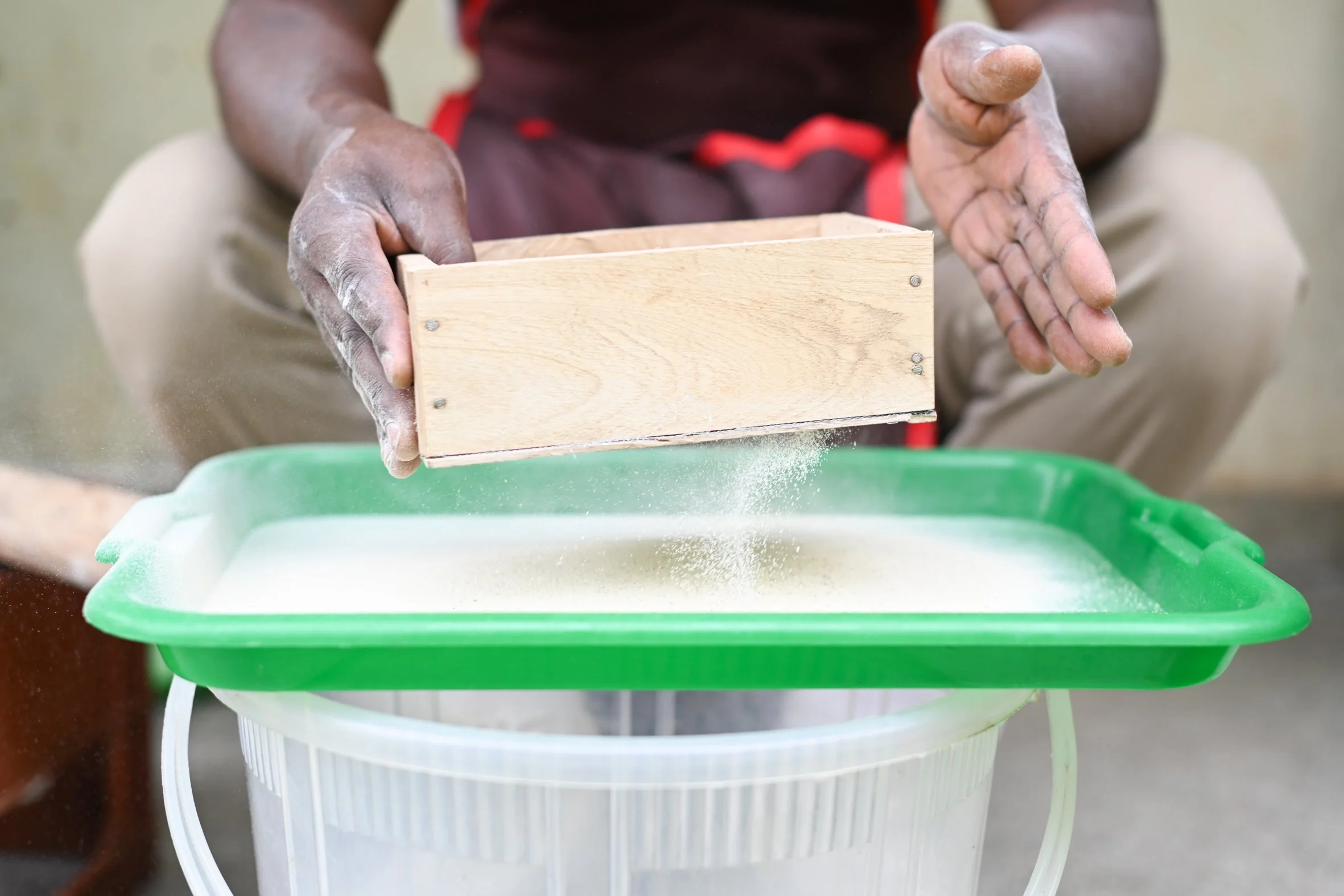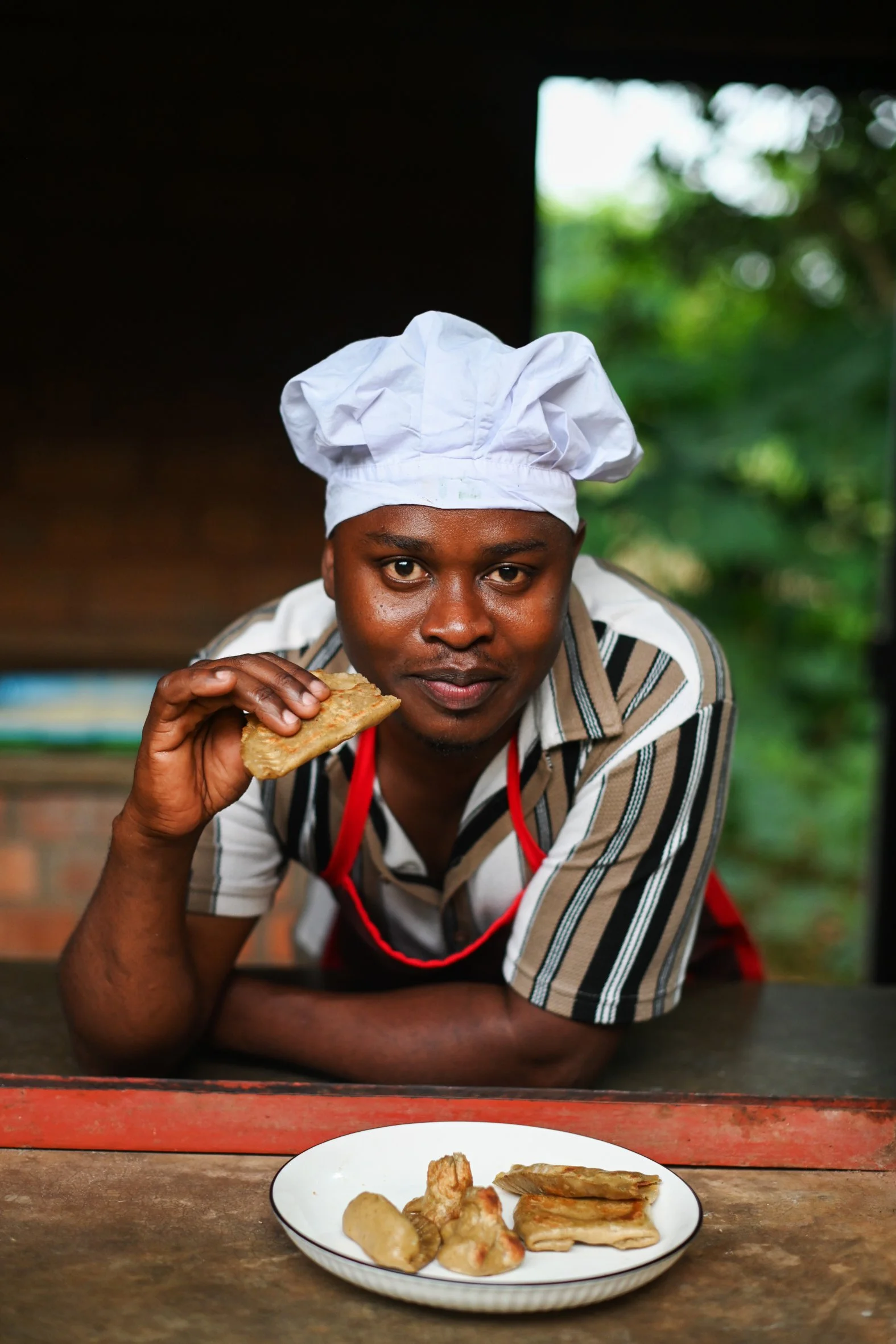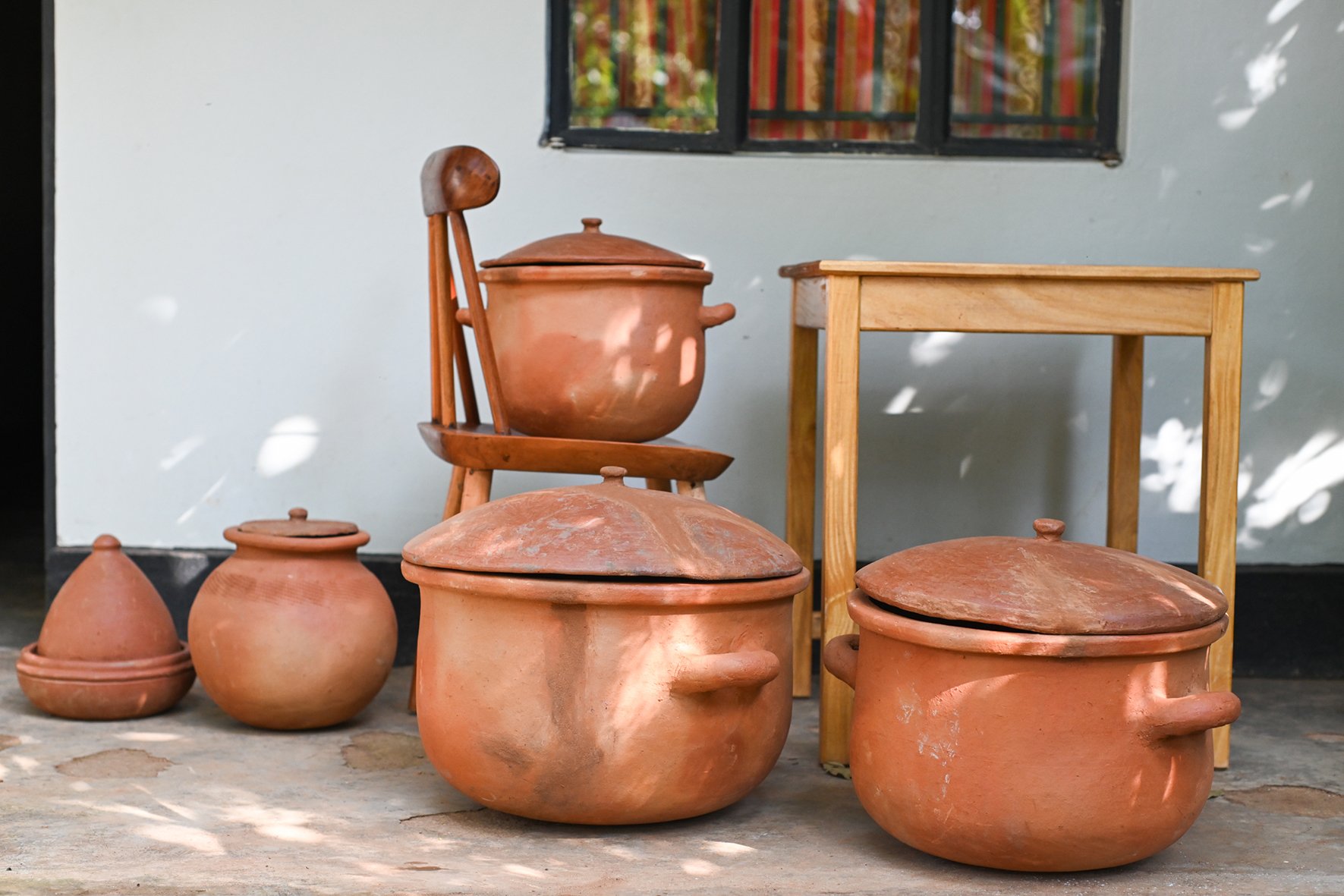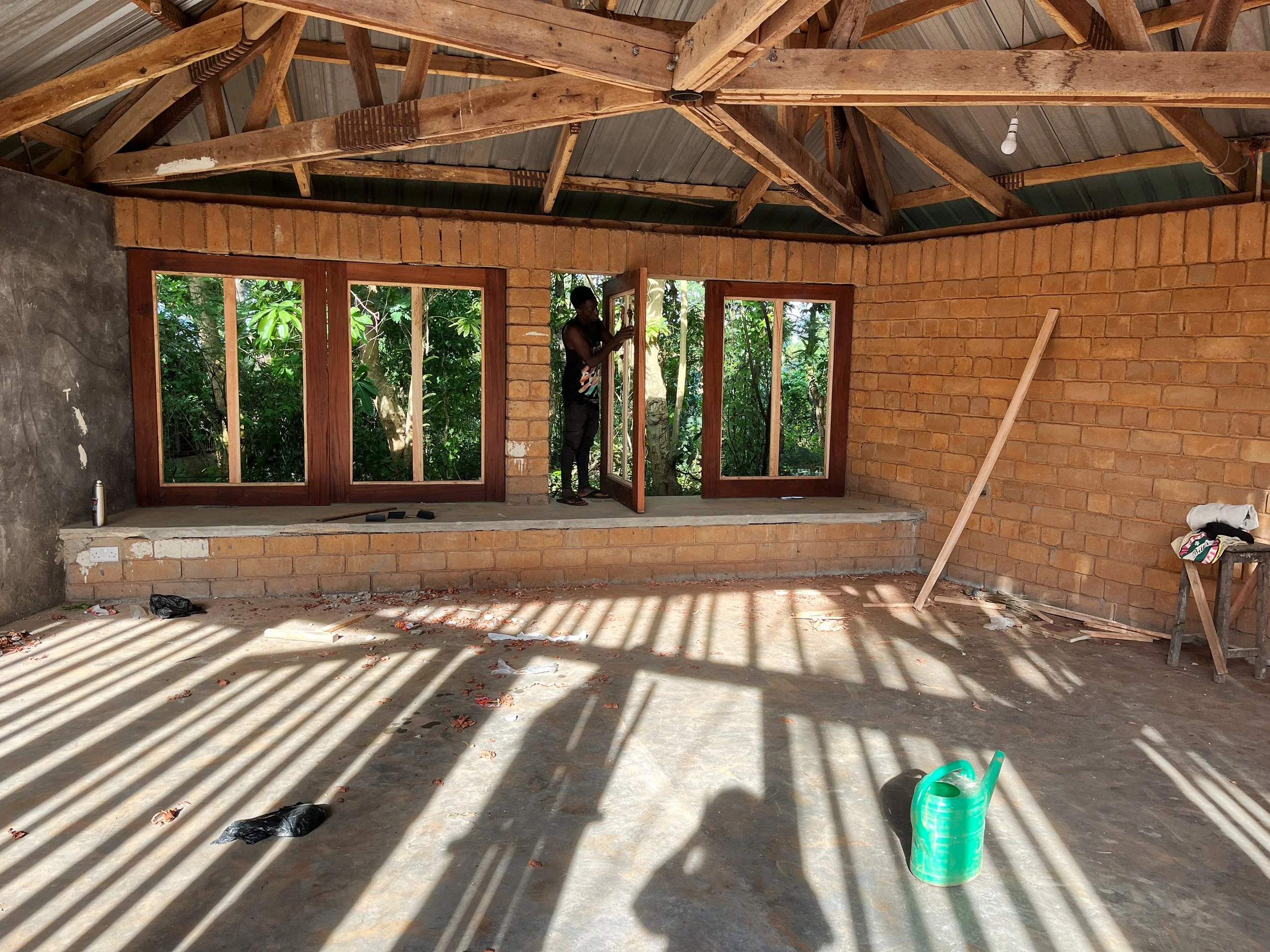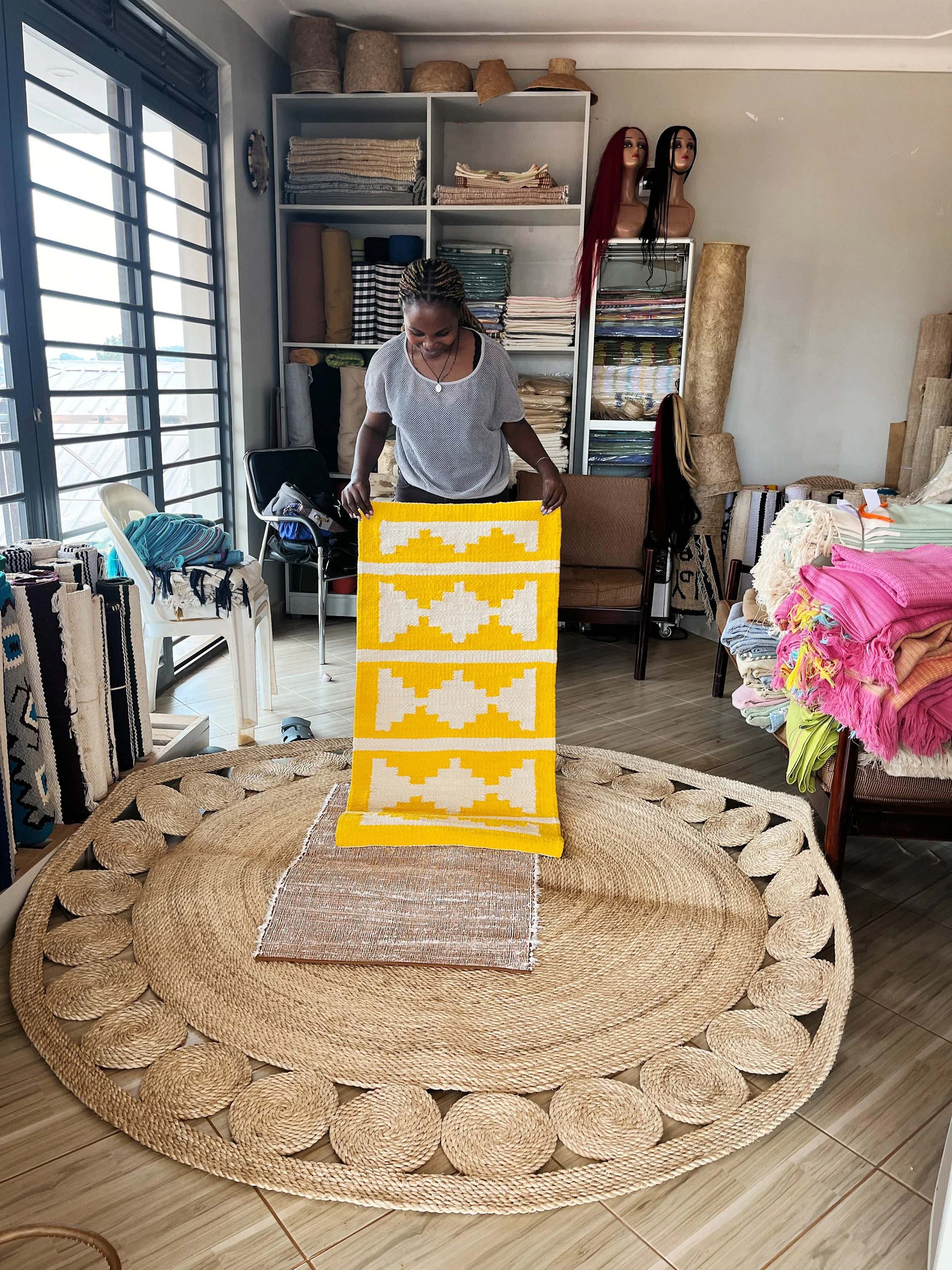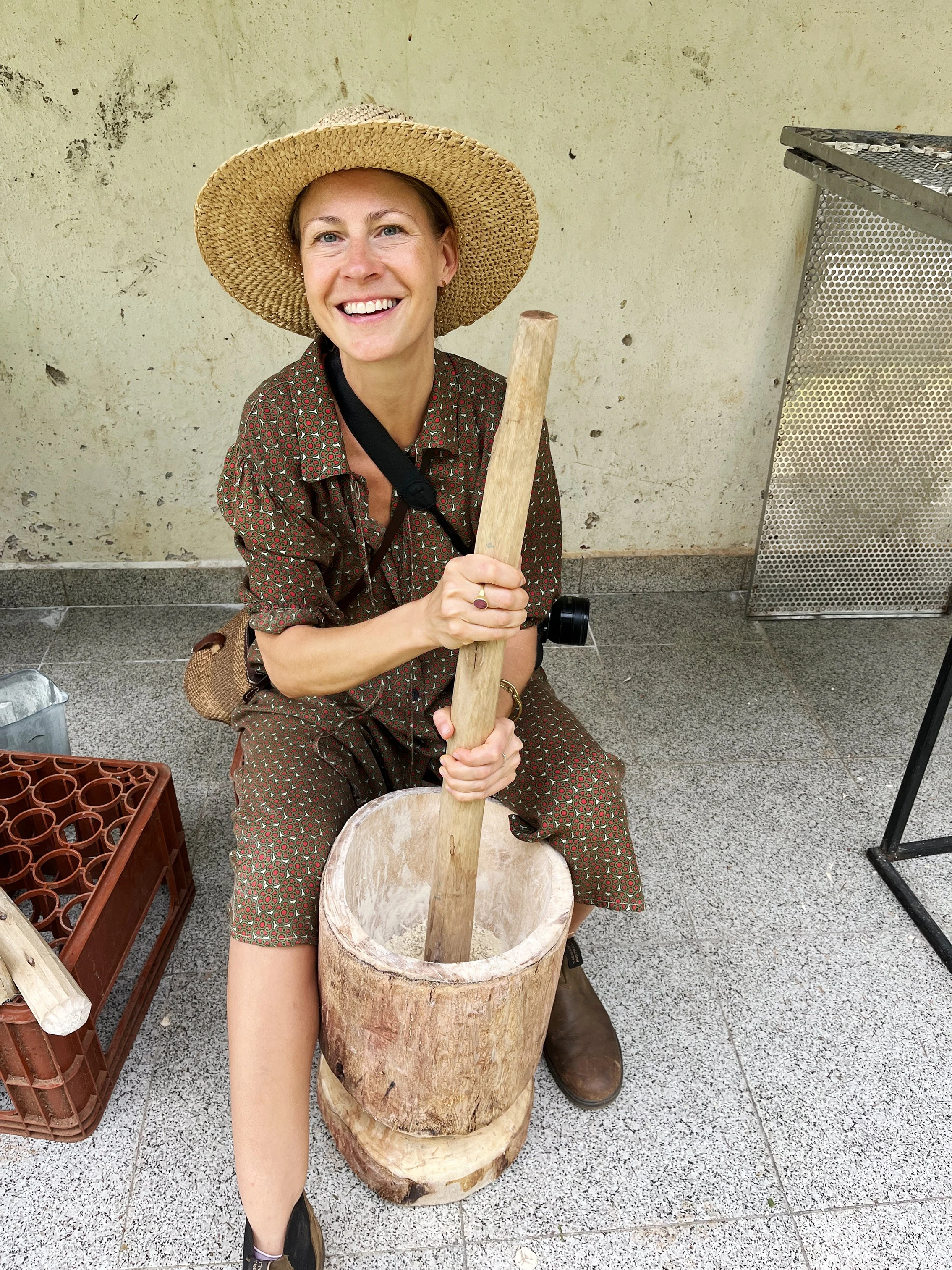“This Place is Changing in a Very Unique Way.”
Assessing the gardens at RUCID College with Principal Mr. Ssebadduka and Francis in Mityana.
Change is never easy, because it changes things! I hope 2025 is off to a great start for you and that 2024 brought you meaningful change! It's crazy, a year ago, BODY&SOIL was just an idea without a roadmap or starting point—a dream waiting to take shape. In June, I took that leap, a decision some might have called irrational. But my intuition was clear: You’re ready. Jump.
I had no permanent home, just a small savings cushion, no official job, and no team. I was navigating it all alone in Uganda. Fast forward to January 4, 2025: I’m waking up at RUCID (Rural Community in Development) Organic College, 70 kilometers from the capital city Kampala, where farmers, young people, and visitors come to learn regenerative farming. This is where BODY&SOIL’s headquarters and classroom are now being established, with renovations buzzing all day. RUCID is my partner in soil, local food expertise, and community trainings.
Before my space is ready to live in, I’m staying in a makeshift room. I shower with a single liter of water in a bucket, cook on a single burner, and rely on my power bank during frequent outages. My organic garbage finds its place in vermicompost (always wished for that), and every morning, four scruffy college dogs join me on my run, passing the homes of subsistence farmers. Around 9 a.m., the college director, Mr. Samuel Nyanzi, greets me warmly: “Good morning, Maria. What’s the program today?”
In the last year, my role has shifted from a solo entrepreneur to leading a local team that shares the BODY&SOIL vision. Walking the grounds, greeting staff, and seeing our new headquarters take shape fills me with pride. What was just a year ago a dream is now becoming tangible.
Above: Renovation of the BODY&SOIL headquarters and classroom in full swing—my organic waste is being used to create fertilizer in our vermicompost. The core team of RUCID, my partners in the BODY&SOIL initiative.
Before I continue, let me introduce you to the core team at RUCID:
Mr. Samuel Nyanzi: Founder, Director, agronomist, innovator.
Mr. Elisha Bireke Ssebadduka: Principal, expert in biodynamics and indigenous foods.
Stuart Nyanzi: Trainer and center manager.
Francis Kluivert: Secretary with extensive research experience.
Mary Namuleme: Organized administrator.
Sara Nantume: Head of programs.
Bonny Kalungi: Custodian with a passion for cooking.
At our first meeting under a tree labeled 'Innovation Square,' I wondered if this unconventional team of passionate individuals could pull this off. Two weeks later, I know the answer: Yes, we can.
BODY&SOIL isn’t just another project; it’s a vision towards a movement. Projects have deadlines—often leading to failure when funding runs out. We’re creating something without a shelf life, step by step. Right now, both my budget and the college’s are stretched thin—there’s barely enough for fuel, and no one is getting paid yet. Still, it’s incredible to see what we can do, even on a tight budget, but with a motivated team sharing a vision: strengthening communities through indigenous, nutritious foods that heal the soil, combat climate change, and strengthen livelihoods.
We all believe that this campus has immense potential to become a model for regenerative farming and holistic nutrition—not just for Uganda, but for all of Africa.
Our first step is to assess what we already have here. Mr. Ssebadduka, Francis (armed with pen and paper), and I start by methodically documenting and assessing each plant, moving from one to the next. What can we redesign and plant more of on these 7 acres? How can we utilize this space more efficiently as demonstration gardens of self-sufficiency that inspire more local farmers?
Above: Evaluating and collecting data on what we are growing on our property. Below: Standing in front of one of the many anthills on-site, which can be better utilized for regenerative farming practices.
Standing in front of a massive anthill, Mr. Ssebadduka shares how termites—until now, I’ve cursed them for damaging my furniture—actually break down organic matter rapidly.
“We could use this area much better,” he suggests, “growing crops like cabbage and pumpkins around the anthills.” He goes on to explain water retention trenches, and we discuss Blackjack weed, which grows like wildfire. While it’s a non-indigenous plant that has taken over, it’s also highly nutritious. In fact, it’s a natural source of iodine and can help heal ulcers—one of the common health issues here caused by poor nutrition.
By the end of the day, we’ve documented 24 plants on just 30% of the property. Five need lab analysis, but it’s exciting to see how many hidden gems we will yet discover. As Mr. Ssebadduka wisely put it, "People have been forced to eat what’s on the market." That’s why it’s crucial to reintroduce indigenous crops and expand local seed banks such as our own, to liberate farmers from their reliance on hybrid seeds and chemical fertilizers.
Our next step took us to two community schools. Although it was still the holiday season, we met with the principals and parent representatives, which was a strong indication of their willingness to engage. We didn’t offer or promise anything beyond introducing ourselves and our idea, so we were impressed by the turnout.
Above: Parent representatives from the schools we will be working with are excited about the knowledge they will gain through our program. At one school, most pupils receive only thinned-down maize porridge, while at the other, the majority receive no food at all. The photo below shows the school’s current kitchen, which we are transforming into an energy-saving kitchen with pots and at least three stoves.
One school is home to 185 children, with 165 of them receiving only a meager cup of diluted maize-meal porridge as charity. Mr. Ssebadduka and Stuart believe that with proper management and planning, the land could potentially produce 80% of the healthy food needed to support the students. The youngest child is just four years old, and the principal shared with us that even children as young as six are already suffering from painful ulcers. At the second school, only 45 out of 115 children are served maize and beans for lunch, while the rest receive no food at all.
We’ve been aware of these challenges, and that’s exactly why we’re here—to offer solutions. But let me be clear: this is not just another “school garden” project. BODY&SOIL’s approach is holistic, designed to create scalable systems that can be replicated in other communities. It all starts with developing a community-driven manual, outlining how to cultivate healthier growing and eating habits that go beyond the usual maize and beans. This is key—only through scalable systems can other communities replicate and benefit from what we’re creating. Our goal is to spark a ripple effect, empowering schools and communities to follow our lead.
Above: Both schools' gardens show great potential—not only with what’s already growing but also with better planning. Top Photo: The principal of one school shows us coffee plants, which could become a valuable source of income for the schools.
We’re piloting this approach with these two schools and their parents. These fields belong to the community—the schools, children, and families. They will manage nurseries, tend the crops, and make this a family effort. This is why parent involvement is so critical. Our role is to plan the gardens, offer guidance to the schools and communities, provide training in regenerative farming and food processing practices, teach practical nutrition through cooking new dishes, and identify marketable foods.
Thanks to the support of early backers, we’ve been able to provide garden tools, organic seedlings, energy-efficient kitchens, and even 10 chicks for each school. When we shared these gifts, the parents erupted into applause.
One father says, “These trainings will help us rediscover our own food. Many of us don’t know what’s in our backyard.” A mother, who hadn’t realized the dangers, confessed that she applied chemical fertilizers with “my bare hands.” Another father nostalgically recalled how farming was more enjoyable in his grandparents’ time—before the widespread use of herbicides and fertilizers. He linked the rise of common health issues like ulcers, hypertension, and cancer to the food now eaten.
Above: From soil to plate knowledge. Our education takes a holistic approach, ensuring that people not only learn how to grow these foods but also how to process them and incorporate them into their kitchens. This shows the process of making sweet potato flour, which I tested with Bonny in the kitchen.
At RUCID College, BODY&SOIL will be integrating nutrition-focused cooking into the students’ curriculum in a hands-on, practical and innovative way. Local farmers will learn hygienic food processing techniques, such as turning sweet potatoes and bananas into flour. These self-processed foods will be paired with local herbs and spices grown in our gardens and prepared in our energy-saving kitchen, which is still under construction.
The classroom will be a vibrant space where students, schoolchildren, and community members can experiment with food, taste, and create nutritious recipes together, from SOIL TO PLATE. It’s more than a learning experience—it’s about rediscovering and celebrating the potential of the local ingredients.
Bonny and I recently rolled up our sleeves to experiment with these flours ourselves. Let me tell you, it was no small task! Gluten-free flours have completely different textures compared to imported wheat flour, which made the process challenging yet rewarding. As Bonny so wisely put it: “When you don’t try, you don’t discover new things.”
On my last day before heading back to Germany where I am at them moment, I sat down with the team. While many aspects of the project still require my attention and guidance, I’m in awe of how everyone has found their place and is contributing so wholeheartedly. The energy of innovation is evident in the air. Together, we’re changing this place, and I can’t wait to return in mid-February to continue this journey.
Above: Traditional clay pots in various sizes we had crafted for use in our future BODY&SOIL classroom (below, still under renovation), where we are building an energy-saving kitchen to cook, test, and enjoy nutritious foods from the gardens with students, communtiy members and children.
In the coming months, our focus will be on finishing the classroom renovations, refurbishing the B&S headquarters (of which we're still missing funding), installing solar panels, and fixing the plumbing. This will allow us to welcome experts and students from around the world to share knowledge and help us grow. Kickstarting the schools’ gardens and working closely with the community will also be a big priority.
From the waste of banana stems, we can create products such as the carpets or even produce biodegradable sanitary pads. These are ideas for future consideration and investment.
At the same time, we’re brainstorming ways to turn waste, like banana fiber, into innovative products and laying the groundwork to bring these ideas to market—or even start an organic market of our own. If you're passionate about regenerative farming, tackling climate change, sustainable products, or creating forward-thinking change, let's discuss how we can collaborate—whether it's through funding, sharing expertise, or forming partnerships that drive meaningful transformation. And of course, any donation (also tax-deductible) contributes to this. :)
Thank you for believing in this work and for taking the time to read my journal. As we move into the new year, I hope we can innovate together and create positive change. Here’s to 2025!
Maria
